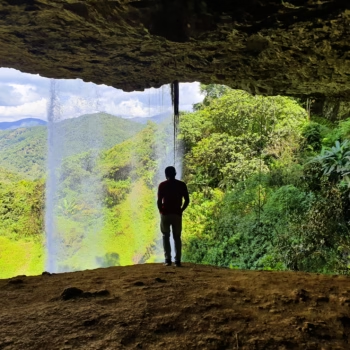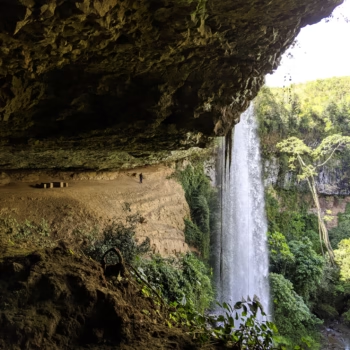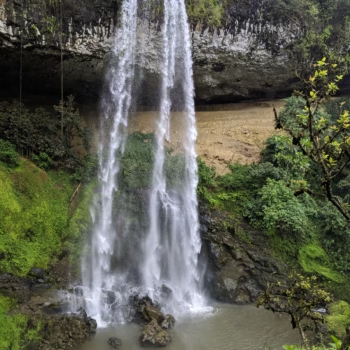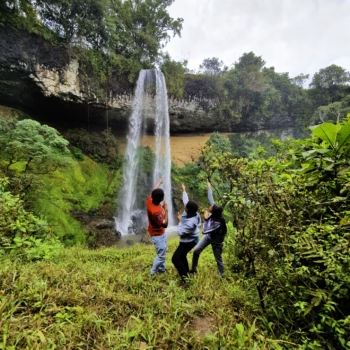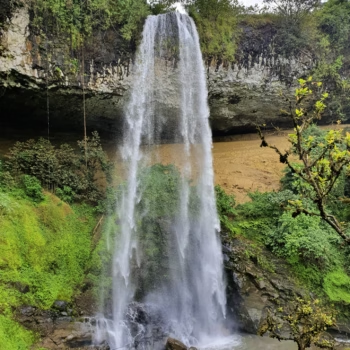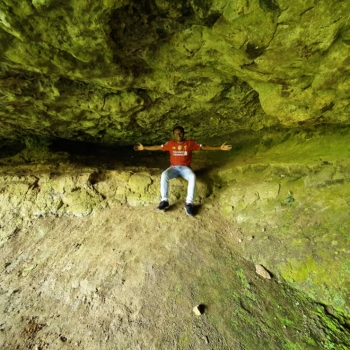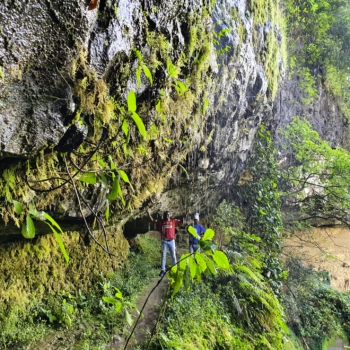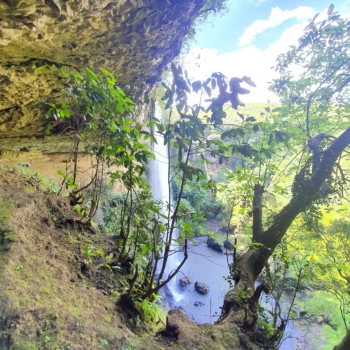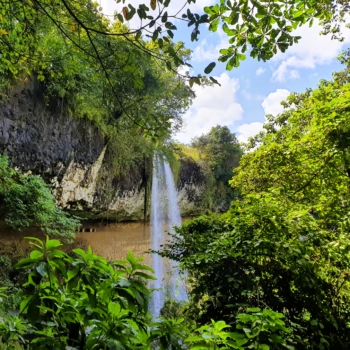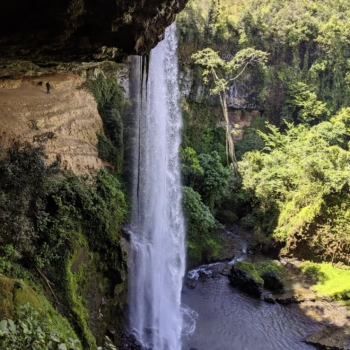Kapologwe Waterfalls
Kapologwe Falls stands as a breathtaking attraction in Isuba village, just 15 km from Tukuyu town. You can explore a hidden cave that lets you view these stunning 30-meter falls from inside, which truly enhances their beauty. The waters flow from the Kala River, which is joined to the larger Kiwira River.
Originally, locals called it Kala Falls. However, the name changed after a young boy named Kapologwe survived a 35-meter drop from the top of the cliff into the pool below. Despite getting some bruises, he lived through this fall. Consequently, villagers renamed the falls in his honor.
Your adventure doesn’t stop with distant views. First, you can carefully climb down the falls. Then, you can enter tunnels hidden behind the curtain of rushing water. Finally, you can swim in the refreshing pool at the bottom.
Behind the falls lies a natural cave with a concrete wall. Interestingly, Germans likely used this area as a fort or hideout during World War I. Additionally, researchers found stone tools like axes and knives nearby, which proves the area was also a prehistoric site.
Interesting Facts About Kapologwe Waterfalls
- Germans are believed to have used the caves as hideouts during World War I.
- The waterfalls are named after a boy who fell from 35m above and survived.
How to Get There
The ~15 km journey from Tukuyu to the falls offers stunning scenery along the way. As you travel, you’ll catch glimpses of the Livingstone Mountains with their lush, green forests. While activities at the falls only take a few hours, you’ll capture amazing photos of landscapes that will create lasting memories.

